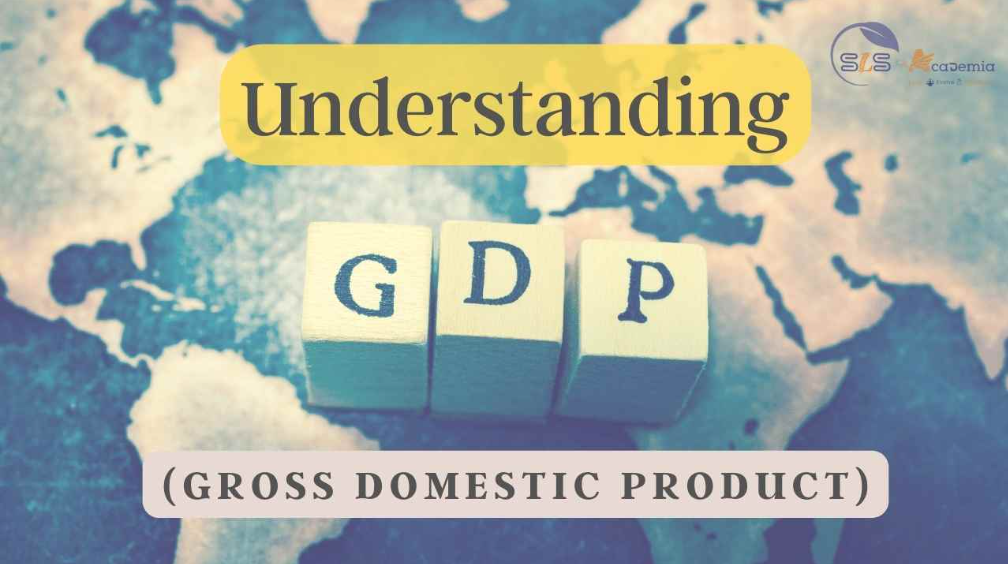
Gross Domestic Product (GDP) is one of the most crucial indicators used to gauge the health and performance of an economy. For investors and traders, understanding GDP can unlock valuable insights into market trends, economic cycles, and investment opportunities. As a key metric that impacts stock markets and financial strategies, GDP deserves a closer look.
This comprehensive guide will break down GDP, its components, importance, and how it relates to stock market investments.
What is Gross Domestic Product (GDP)?
Gross Domestic Product represents the total monetary value of all goods and services produced within a country’s borders over a specific period, typically measured quarterly or annually. It acts as a thermometer for the economy, offering a snapshot of its size, growth, and overall health.
GDP can be expressed in two key forms:
- Nominal GDP: Calculated at current market prices, it doesn’t account for inflation.
- Real GDP: Adjusted for inflation, providing a more accurate representation of economic growth over time.
Governments, policymakers, and financial analysts closely monitor GDP to understand economic performance and make informed decisions.
Components of GDP
GDP is calculated using the expenditure approach, which includes the following components:
- Consumption (C):
Refers to household spending on goods and services, such as food, housing, healthcare, and entertainment. Consumption typically forms the largest part of GDP. - Investment (I):
Captures business spending on infrastructure, machinery, and inventory. It also includes residential construction and investments in intellectual property. - Government Spending (G):
Encompasses expenditures on public services, infrastructure, defense, and salaries for public employees. - Net Exports (NX):
Calculated as exports minus imports, net exports reflect the trade balance. A positive balance adds to GDP, while a negative balance subtracts from it.
Formula for GDP:
GDP=C+I+G+(X−M)GDP = C + I + G + (X – M)GDP=C+I+G+(X−M)
Where X = Exports and M = Imports.
Why is GDP Important?
GDP serves multiple critical purposes:
1. Indicator of Economic Health
A growing GDP signifies a robust economy, which can lead to better job prospects, higher incomes, and increased consumer spending. Conversely, a shrinking GDP may signal economic distress or recession.
2. Tool for Policy Decisions
Governments use GDP data to design fiscal policies, adjust interest rates, and allocate resources effectively.
3. Stock Market Influence
GDP growth often correlates with a bullish stock market. When the economy expands, corporate profits tend to rise, boosting investor confidence and driving stock prices higher.
4. Investor Insight
For traders and investors, GDP trends can help anticipate market movements, identify growth sectors, and assess risks.
How GDP Impacts the Stock Market
GDP growth or contraction has a direct and indirect impact on stock markets. Here’s how:
1. Corporate Earnings
When GDP grows, businesses experience higher demand for their products and services, leading to increased revenues and profits. This translates to higher stock prices.
2. Interest Rates
Central banks, such as the Reserve Bank of India (RBI), may raise or lower interest rates based on GDP performance. A strong GDP may prompt rate hikes to control inflation, affecting borrowing costs for companies and consumers.
3. Sector-Specific Trends
Certain sectors, like consumer goods, real estate, and technology, thrive during periods of economic expansion, while defensive sectors like healthcare and utilities perform better during slowdowns.
4. Foreign Investment
A healthy GDP attracts foreign investments, leading to increased liquidity in stock markets and potentially higher valuations.
GDP vs. Other Economic Indicators
While GDP is a critical metric, investors should also consider complementary indicators for a holistic view:
- Inflation Rate: Affects purchasing power and interest rates.
- Unemployment Rate: Reflects labor market health.
- Consumer Confidence Index (CCI): Measures optimism in the economy.
- Industrial Production: Indicates manufacturing activity levels.
Using these indicators alongside GDP provides deeper insights into economic conditions.
How to Leverage GDP Data for Investments
1. Monitor Quarterly GDP Reports
Keep an eye on government-released GDP reports. Significant deviations from expectations can create market volatility, presenting opportunities for short-term trades.
2. Understand Cyclical Trends
During periods of strong GDP growth, focus on cyclical stocks in sectors like consumer discretionary, finance, and industrials. In downturns, defensive stocks are often safer bets.
3. Align with Policy Shifts
Analyze how GDP data influences central bank policies and adjust your investment strategies accordingly. For instance, rising GDP might lead to tighter monetary policies, impacting fixed-income investments.
India’s GDP: A Snapshot
India’s GDP has witnessed remarkable growth over the past decades, making it one of the world’s fastest-growing economies. Contributing factors include:
- Rising consumer spending.
- Expanding industrial base.
- Strong service sector performance.
In 2024, India continues to attract global attention as a hotspot for investments, with key drivers being technological innovation, infrastructure development, and favorable government policies.
Final Thoughts: Why GDP Matters to Your Portfolio
For investors and traders, GDP is more than just a number. It’s a powerful tool to decode market dynamics, anticipate trends, and refine investment strategies. At ASBFinance.in, a proud partner of AngelOne Limited, we aim to empower you with the knowledge to make smarter financial decisions.
Understanding GDP and its implications can help you navigate the complexities of the stock market, ensuring your investments align with economic realities.
Stay informed, stay invested, and let GDP be your guide to financial growth.
Explore more insightful articles on stock markets, financial planning, and economic trends at ASBFinance.in.

